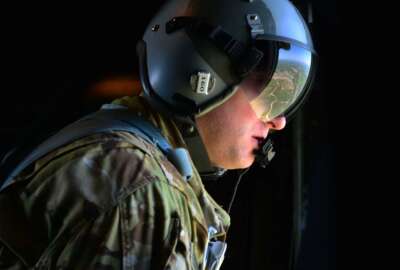As of April 27, the Air Force empowered its commanders and supervisors to conduct nearly all ancillary training as they see fit. Computer-based training is no longer the primary tool for providing information.
The Air Force’s 1st Special Operations Wing is one of the first to take advantage of the new powers.
The wing is using mass briefings and group dialogue instead of individual computer-based training “whenever possible,” according to an April 30 memo signed by wing Commander Col. Thomas Palenske and first published on the Air Force amn/nco/snco Facebook site.
The Air Force as a whole is giving all its commanders the power to determine how their airmen will “complete mandatory training through the method and at the time they deem most appropriate, and will determined the best way to record such training has occurred,” the April 27 memo stated.
The 1st Special Operations Wing is streamlining training that is event driven, annual and single use. Some classes the wing will now do in groups include cyber awareness challenge training, force protection training, sexual assault and suicide training, religious freedom training and newcomers human relations training.
This isn’t the first time the wing changed policy to make things easier for its airmen. The wing cut some extra duties airmen were required to perform earlier in the year.
Earlier in April, the wing started handing out waivers to some enlisted airmen who are stuck in a bureaucratic quagmire waiting to move to the next skill level.
Currently, airmen moving to the skill level of journeyman or craftsman must wait at least a year before they are awarded their rank.
But Palenske found some enlisted airmen were finishing their training and development before that one-year period and were held back from moving to the next rank purely because they had to finish out the year.
Palenske told Federal News Radio during a May 1 interview that the larger intent of the memos is to change the culture of the Air Force.
Palenske said he is trying erode any barriers of trust between leadership and airmen to better the force and bring ideas up from the bottom.
“The real intent is to set a culture that that truly empowers airmen at every echelon inside our formation. Even deeper than squadron commanders, I’m talking about an [airman] that’s on the flight line turning wrenches. If they have a good idea we [as leaders] should be there to make their idea a reality, not an impediment to that and not relying on outdated [instructions] from 2007 and say, ‘No, you can’t do what you think is right and what I think is also right because this 11-year-old [instruction] says you can’t do it,’” Palenske said.
He added all of the memos so far came from the airmen.
“I haven’t had an original idea in 49 years,” he said.
The Air Force as a whole is trying to reduce burdens on airmen and to empower lower-level leaders to take on more risk since higher-level leaders are not always on the ground to realize what works best.
Air Force Secretary Heather Wilson ordered a two-year review of the instructions and policies to reduce the rules and outdated procedures airmen must follow. Wilson said the Air Force rescinded at least 100 instructions since the initial announcement last August.
“We are prioritizing the ones that are outdated and actually track them every month,” Wilson said, during a March 30 Air Force Association event in Washington. “The biggest challenge we have been facing is in personnel and operations. We need to get those right and get them understandable and then get the approval authorities, the waiver authorities at the lowest appropriate level.”
In the meantime, the Air Force is counting on wing commanders to lead the way and ignore some outdated instructions.
Copyright
© 2024 Federal News Network. All rights reserved. This website is not intended for users located within the European Economic Area.
